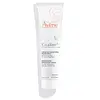What's inside
What's inside
 Key Ingredients
Key Ingredients

 Benefits
Benefits

 Concerns
Concerns

 Ingredients Side-by-side
Ingredients Side-by-side

Water
Skin ConditioningCetearyl Isononanoate
EmollientGlycerin
HumectantPropanediol
SolventCetearyl Alcohol
EmollientCocos Nucifera Fruit Juice
EmollientButylene Glycol
HumectantHydroxyethyl Acrylate/Sodium Acryloyldimethyl Taurate Copolymer
Emulsion StabilisingPhenoxyethanol
PreservativeCetearyl Glucoside
EmulsifyingGlyceryl Stearate
EmollientPEG-100 Stearate
Propylene Glycol
HumectantXylitylglucoside
HumectantDimethicone
EmollientCellulose
AbsorbentTapioca Starch
Anhydroxylitol
HumectantEthylhexylglycerin
Skin ConditioningParfum
MaskingSodium Polyacrylate
AbsorbentSilica Silylate
EmollientXanthan Gum
EmulsifyingXylitol
HumectantCaprylic/Capric Triglyceride
MaskingTartaric Acid
BufferingCitric Acid
BufferingGlucose
HumectantTamarindus Indica Extract
SmoothingSpiraea Ulmaria Extract
AstringentMarrubium Vulgare Extract
Skin ConditioningLycium Barbarum Fruit Extract
AstringentFicus Carica Fruit Extract
HumectantMalpighia Emarginata Seed Extract
Skin ConditioningFurcellaria Lumbricalis Extract
Skin ConditioningSodium Benzoate
MaskingRhododendron Ferrugineum Extract
MaskingArbutus Unedo Fruit Extract
AntioxidantPotassium Sorbate
PreservativeSorbic Acid
PreservativeLapsana Communis Flower/Leaf/Stem Extract
Skin ConditioningMaris Sal
Skin ConditioningCI 14700
Cosmetic ColorantWater, Cetearyl Isononanoate, Glycerin, Propanediol, Cetearyl Alcohol, Cocos Nucifera Fruit Juice, Butylene Glycol, Hydroxyethyl Acrylate/Sodium Acryloyldimethyl Taurate Copolymer, Phenoxyethanol, Cetearyl Glucoside, Glyceryl Stearate, PEG-100 Stearate, Propylene Glycol, Xylitylglucoside, Dimethicone, Cellulose, Tapioca Starch, Anhydroxylitol, Ethylhexylglycerin, Parfum, Sodium Polyacrylate, Silica Silylate, Xanthan Gum, Xylitol, Caprylic/Capric Triglyceride, Tartaric Acid, Citric Acid, Glucose, Tamarindus Indica Extract, Spiraea Ulmaria Extract, Marrubium Vulgare Extract, Lycium Barbarum Fruit Extract, Ficus Carica Fruit Extract, Malpighia Emarginata Seed Extract, Furcellaria Lumbricalis Extract, Sodium Benzoate, Rhododendron Ferrugineum Extract, Arbutus Unedo Fruit Extract, Potassium Sorbate, Sorbic Acid, Lapsana Communis Flower/Leaf/Stem Extract, Maris Sal, CI 14700
Water
Skin ConditioningCaprylic/Capric Triglyceride
MaskingParaffinum Liquidum
EmollientGlycerin
HumectantHydrogenated Vegetable Oil
EmollientZinc Oxide
Cosmetic ColorantPropylene Glycol
HumectantPolyglyceryl-2 Sesquiisostearate
EmulsifyingPEG-22/Dodecyl Glycol Copolymer
EmulsifyingAluminum Stearate
Cosmetic ColorantAquaphilus Dolomiae Ferment Filtrate
Skin ConditioningArginine
MaskingBeeswax
Emulsion StabilisingCopper Sulfate
Skin ConditioningMagnesium Stearate
Cosmetic ColorantMicrocrystalline Wax
Emulsion StabilisingTromethamine
BufferingZinc Sulfate
AntimicrobialWater, Caprylic/Capric Triglyceride, Paraffinum Liquidum, Glycerin, Hydrogenated Vegetable Oil, Zinc Oxide, Propylene Glycol, Polyglyceryl-2 Sesquiisostearate, PEG-22/Dodecyl Glycol Copolymer, Aluminum Stearate, Aquaphilus Dolomiae Ferment Filtrate, Arginine, Beeswax, Copper Sulfate, Magnesium Stearate, Microcrystalline Wax, Tromethamine, Zinc Sulfate
 Reviews
Reviews

Ingredients Explained
These ingredients are found in both products.
Ingredients higher up in an ingredient list are typically present in a larger amount.
This ingredient is an emollient, solvent, and texture enhancer. It is considered a skin-softener by helping the skin prevent moisture loss.
It helps thicken a product's formula and makes it easier to spread by dissolving clumping compounds.
Caprylic Triglyceride is made by combining glycerin with coconut oil, forming a clear liquid.
While there is an assumption Caprylic Triglyceride can clog pores due to it being derived from coconut oil, there is no research supporting this.
Learn more about Caprylic/Capric TriglycerideGlycerin is already naturally found in your skin. It helps moisturize and protect your skin.
A study from 2016 found glycerin to be more effective as a humectant than AHAs and hyaluronic acid.
As a humectant, it helps the skin stay hydrated by pulling moisture to your skin. The low molecular weight of glycerin allows it to pull moisture into the deeper layers of your skin.
Hydrated skin improves your skin barrier; Your skin barrier helps protect against irritants and bacteria.
Glycerin has also been found to have antimicrobial and antiviral properties. Due to these properties, glycerin is often used in wound and burn treatments.
In cosmetics, glycerin is usually derived from plants such as soybean or palm. However, it can also be sourced from animals, such as tallow or animal fat.
This ingredient is organic, colorless, odorless, and non-toxic.
Glycerin is the name for this ingredient in American English. British English uses Glycerol/Glycerine.
Learn more about GlycerinPropylene Glycol is an odorless, colorless liquid. As a humectant, it helps skin retain moisture. It also aids in delivering active ingredients.
Another role of this ingredient is preventing a product from melting or freezing. Propylene glycol also adds antimicrobrial properties to a product, elongating product lifespan.
This ingredient is considered an organic alcohol and commonly added into both cosmetics and foods.
Those with sensitive skin or conditions may develop a rash when using this ingredient.
Learn more about Propylene GlycolWater. It's the most common cosmetic ingredient of all. You'll usually see it at the top of ingredient lists, meaning that it makes up the largest part of the product.
So why is it so popular? Water most often acts as a solvent - this means that it helps dissolve other ingredients into the formulation.
You'll also recognize water as that liquid we all need to stay alive. If you see this, drink a glass of water. Stay hydrated!
Learn more about Water